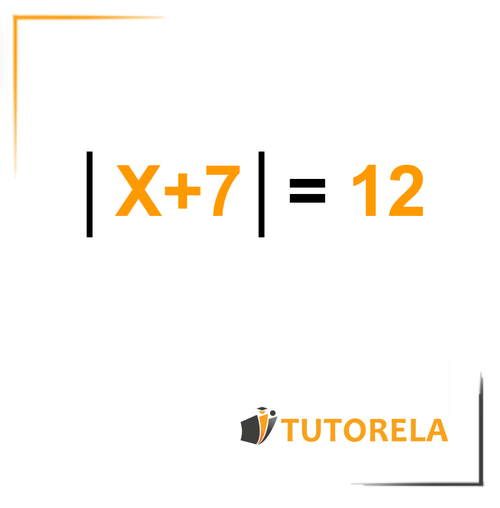The "absolute value" may seem complicated to us, but it is simply the distance between a given number and the figure .
Absolute Value
What is absolute value?
An absolute value is denoted by ││ and expresses the distance from zero points.
The absolute value of a positive number - will always be the number itself.
For example:
The absolute value of a negative number: will always be the same number, but positive.
For example:
Note that the absolute value of a number will always be a positive number given that distance is always positive.

The absolute value of a number is the distance between the number itself and 0 along a number line.
For example:
- The distance between the number and is units. Therefore, the absolute value of is .
- The distance between the number and is also units. Therefore, the absolute value of will also be .
As we can see, from the point of view of absolute value, it doesn't matter if the number is positive or negative.
To denote the absolute value, the number is written between two vertical lines.
Test yourself on absolute value!

Determine the absolute value of the following number:
\( \left|18\right|= \)
If we have an unknown or an expression with an unknown within an absolute value, we should query which expression will result in the value of the desired equation. We will proceed to divide the problem into cases in order to discover the unknown.
Example in the equation:

We will check which absolute value expression is equal to .
The answer will be or . (Both an absolute value is equal to and an absolute is equal to ).
Therefore, we will take the complete expression and divide it into two cases:
First case:
We solve as follows:
Second case:
We solve
Therefore, the solution to the exercise is:
Examples:
- The absolute value of is represented as follows: ;
- The absolute value of is represented as follows: .
However, when writing calculations, we will do so as follows:
The absolute value of a negative number will always be greater than the number itself.
The absolute value of a positive number will always be equal to the positive number.
Examples:
Practice Exercises to Find the Absolute Value
Fill in the blanks with one of the following symbols: <, >, =.
- ,,
- ,,
- ,,
- ,,
- ,,
- ,,
- ,,
- ,,
- ,,
Solve the following exercises:
Determine the absolute value of the following number:
\( \left|-25\right|= \)
Solve for the absolute value of the following integer:
\( \left|34\right|= \)
\( \left|0.8\right|= \)
Examples with solutions for Absolute value
Exercise #1
Determine the absolute value of the following number:
Video Solution
Step-by-Step Solution
The "absolute value" can be viewed as the distance of a number from 0.
Therefore, the absolute value will not change the sign from negative to positive, it will always be positive.
Answer
Exercise #2
Determine the absolute value of the following number:
Step-by-Step Solution
The absolute value of a number is the distance of the number from zero on a number line, without considering its direction. For the number , the absolute value is because it is 25 units away from zero without considering the negative sign.
Answer
Exercise #3
Solve for the absolute value of the following integer:
Step-by-Step Solution
The absolute value of a number is always non-negative because it represents the distance from zero. Therefore, the absolute value of is .
Answer
Exercise #4
Step-by-Step Solution
The absolute value of is the distance from zero to zero on the number line. Since zero is not negative or positive, .
Answer
Exercise #5
Video Solution
Step-by-Step Solution
These signs in the exercises refer to the concept of "absolute value",
In absolute value we don't have "negative" or "positive", instead we measure the distance from point 0,
In other words, we always "cancel out" the negative signs.
In this exercise, we'll change the minus to a plus sign, and simply remain with 19 and a quarter.
And that's the solution!









